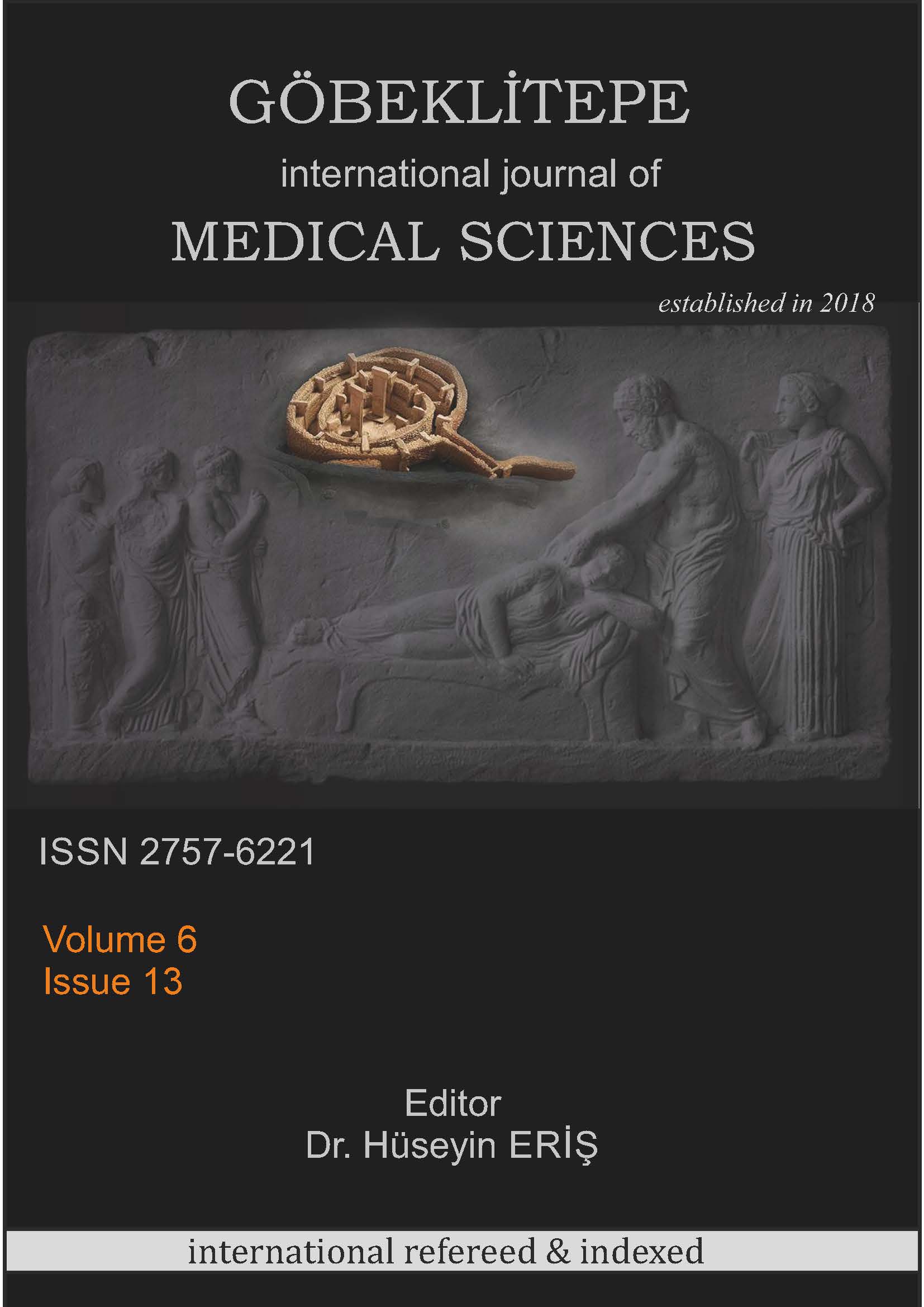THE EFFECT OF GENDER ROLE ATTITUDES ON THE NUMBER OF CHILDREN AND CHILD GENDER PREFERENCE
DOI:
https://doi.org/10.55433/gsbd.178.Keywords:
Gender roles attitude, traditionalist attitude, egalitarian attitude, number of children, child gender preferenceAbstract
Fertility is a biological phenomenon for reproduction, yet it is influenced by cultural and social values. Therefore, to examine health problems related to high fertility in a society, it is necessary to determine the fertility-related behaviors and attitudes of that society. This research was conducted to determine the effect of gender roles attitude on the number of children and child gender preference. The sample of this descriptive study consisted of 101 women who were born and had spent most of their life in Şanlıurfa, who were married and had not yet reached menopause were included in the study. The data were collected by face-to-face interview method through the Data Collection Form and the Gender Roles Attitude Scale. In the study, in terms of gender roles, 8.9% of women had a traditionalist and 91.1% of them had an egalitarian attitude. Also, it was determined that socio-cultural factors such as education, working status, family type and ethnicity affect women's attitudes towards gender role, while gender roles attitudes have an effect on the number of children and gender preferences. According to the research findings, women with traditionalist gender role attitudes had higher number of children and preference for male children.
References
İmamoğlu, O. (1993). Changing family roles in a changing world (Turkish: Değişen dünyada değişen aile içi roller). Kadın Araştırmaları Dergisi, 1, 58-68.
Voicu, M. & Constantin, A. (2016). Couple’s status on labour market and their attitudes towards gender roles. Revısta de Cercetare Şi Interventie Sociala, 54, 5-22.
Shastri, A. (2014). Gender inequality and women discrimination. IOSR Journal Of Humanities And Social Science (IOSR-JHSS, 19 ( 11), 27-30.
Demirbilek, S. (2007). The studying of sociological aspect of the gender discrimination (Turkish: Cinsiyet ayrımcılığın sosyolojik açıdan incelenmesi). Finans Politik & Ekonomik Yorumlar Dergisi, 44 (511), 45-49.
Çakır, H., & Aksoy, E. (2016). The changing intrafamilial gender roles of the three generations of women living in rural Yozgat (Turkish: Yozgat kırsalında yaşayan üç kuşak kadının aile içi cinsiyet rollerindeki değişim). Turkish Studies: International Periodical for the Languages, Literature and History of Turkish or Turkic, 11 (2), 259-280.
Ersoy, E. (2009). Woman and man identity in gender culture (example of Malatya) (Turkish: Cinsiyet kültürü içerisinde kadın ve erkek kimliği (Malatya örneği), Fırat University Journal of Social Science, 19 (2), 209-230.
Grand National Assembly of Turkey Women's Men's Opportunity Equipment Commission (Turkish: Türkiye Büyük Millet Meclisi Kadın Erkek Fırsat Eşitliği Komisyonu). (2011). Due to child gender women created on psychologıcal violence, title money and about traditional marriages commission report (Turkish: Çocuk cinsiyeti nedeniyle kadın üzerinde oluşturulan psikolojik şiddet, başlık parası ve geleneksel evlilikler hakkında komisyon raporu). Women Men Opportunity Coordination Commission Publications No: 5. Retrieved from https://www.tbmm.gov.tr/komisyon/kefe/docs/komisyon_rapor_no_5.pdf.
Ökten, Ş. (2009). Gender and power: the system of gender in Southeastern Anatolia. The Journal of International Social Research, 2 (8), 302-312.
Turkish Statistical Institute, Birth Statistics 2022 (Turkish: Türkiye İstatistik Kurumu, Doğum İstatistikleri 2022). Retrieved July 19, 2023, from https://data.tuik.gov.tr/Bulten/Index?p=Dogum-Istatistikleri-2022-49673.
Republic of Turkey The Ministry of Health (2023). Health Statistics Yearbook 2021, Capter 2 Mortality pp:20. Retrieved from https://dosyasb.saglik.gov.tr/Eklenti/45317,siy2021-ingilizcepdf.pdf?0
Düşündere, A.T., Bilgiç, A.K., & Avşar, İ. (2020). Turkey in 81 Cities Gender Equality Scorecard-TSKB/TEPAV (Turkish: 81 İlde Türkiye’nin Toplumsal Cinsiyet Eşitliği Karnesi-TSKP/TEPAV). Retrived from https://www.tskb.com.tr/uploads/file/8c1cb7177b044d3e4d0aaae6a7ed121c1639646238384.pdf.
Zeyneloğlu, S., & Terzioğlu, F. (2011). Development and psychometric properties gender roles attitude scale. H. U. Journal of Education (Hacettepe Üniversitesi Eğitim Fakültesi Dergisi), 40, 409-420.
European Institute for Gender Equality (2019). Gender Statistics Database, Gender Equality Index intersectionalities. Retrieved from https://eige.europa.eu/gender-statistics/dgs/indicator/index_data__index_intersect/metadata.
Ökten, Ş. (2006). The effects of socio-cultural and structural characteristics of GAP Region on family structure (Turkish: GAP Bölgesi’nin sosyo-kültürel ve yapısal özelliklerinin aile yapısına etkileri). Aile ve Toplum, 8,3 (9), 23-34.
Öztürk, S., & Benek, S. (2018). An evaluation of perceptions and use of space in the context of gender: An example of Şanlıurfa (Toplumsal cinsiyet bağlamında mekânın algılanması ve kullanılmasına ilişkin bir değerlendirme: Şanlıurfa örneği). International Geography Symposium on the 30th Anniversary of TUCAUM (Turkish: TÜCAUM 30. Yıl Uluslararası Coğrafya Sempozyumu), 3-6 Ekim 2018 /3-6 October 2018, Ankara.
Ökten Ş, Tüysüz S. (2017). Rural development and women’s poverty: an example of Harran, Sanlıurfa (Turkish: Kırsal kalkınma ve kadın yoksulluğu: Şanlıurfa Harran örneği). Trakya Üniversitesi Sosyal Bilimler Dergisi, 19 (2), 381-404.
Turkey Demographic and Health Survey 2018 (Turkish Türkiye Nüfus Sağlık Araştırması, 2018). (2019). Hacettepe Üniversitesi Nüfus Etütleri Enstitüsü, Türkiye Cumhuriyeti Kalkınma Bakanlığı, TÜBİTAK, Ankara, Türkiye. Retrieved from http://www.hips.hacettepe.edu.tr/tnsa2018/rapor/TNSA2018_ana_Rapor.pdf.
Keshavarz, H. (2012). Factors affecting reproductive behavior of different between non-immigrant and immigrant tribes in Semirom. J Health Syst Res, 8, 71-5.
Henz U. (2008). Gender roles and values of children: Childless couples in East and West Germany. Demogr Res, 19, 1451-1500. https://dx.doi.org/10.4054/DemRes.2008.19.39
Golmakani, N., Fazeli, E., Taghipour, A., & Shakeri, M. T. (2015). Relationship between gender role attitude and fertility rate in women referring to health centers in Mashhad in 2013. Iranian Journal of Nursing and Midwifery Research, 20 (2), 269-274.
McDonald, P. (2000a). Gender equity, social institutions and the future of fertility. Journal of Population Research, 17 (1), 1-16. Doi:10.1007/BF03029445. https://doi.org/10.1007/BF03029445
McDonald, P. (2000b). Gender equity in theories of fertility transition. Population and Development Review, 26 (3), 427-439. Doi:10.1111/j.1728-4457.2000.00427.x. https://doi.org/10.1111/j.1728-4457.2000.00427.x
Kaufman, G. (2000). Do gender role attitudes matter? Family formation and dissolution among traditional and egalitarian men and women. Journal of Family Issues, 21 (1). 128-144. https://doi.org/10.1177%2F019251300021001006
Downloads
Published
Versions
- 2024-07-02 (2)
- 2023-09-20 (1)
How to Cite
Issue
Section
License
Copyright (c) 2023 Göbeklitepe Sağlık Bilimleri Dergisi

This work is licensed under a Creative Commons Attribution 4.0 International License.




